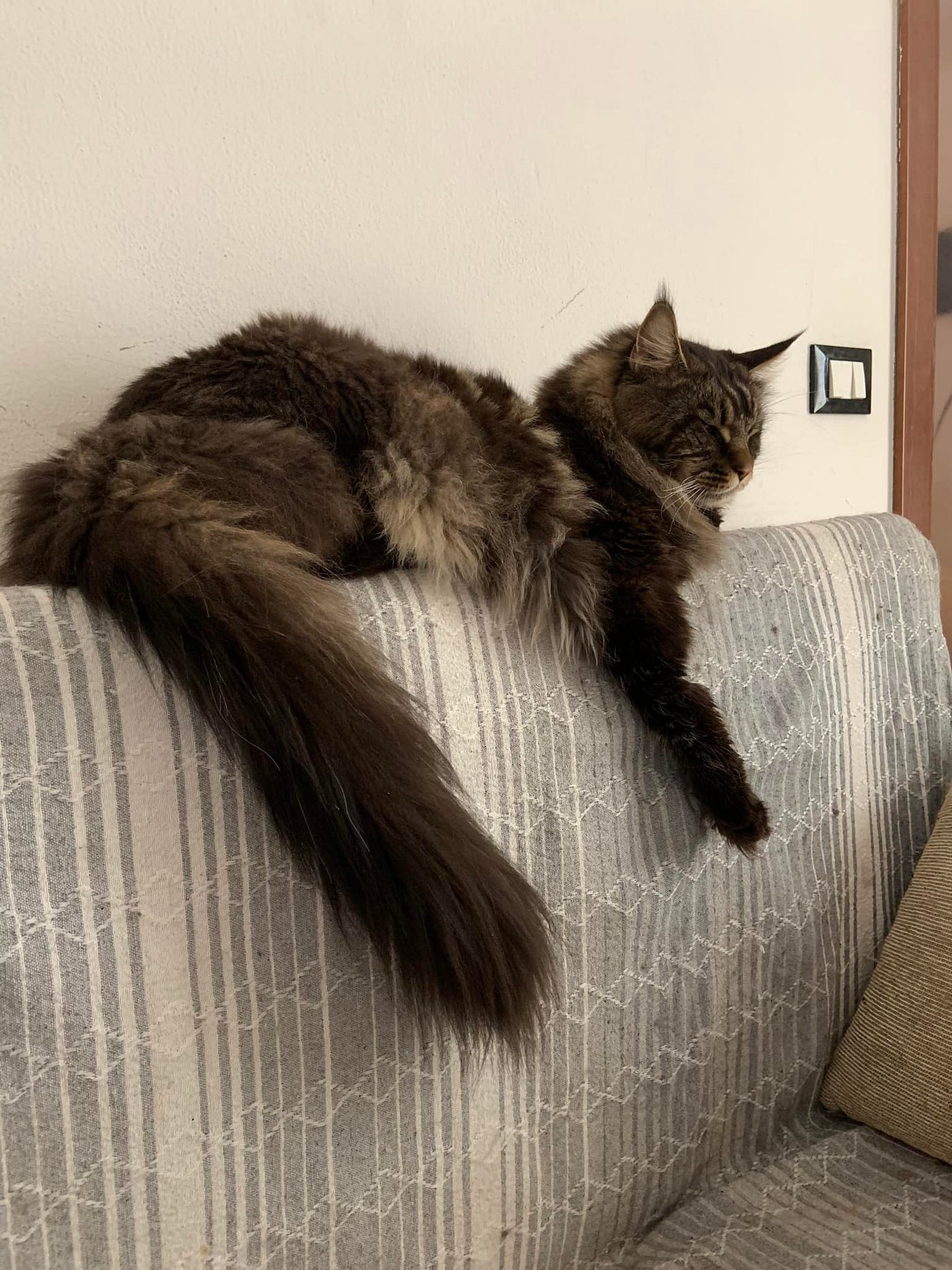The relationship between plants and cats in an apartment can often be a cause for concern for pet owners. While plants can add beauty and a touch of nature to indoor spaces, they can also pose potential dangers to domestic cats. As responsible pet owners, it is crucial to be aware of the potential hazards that certain plants can pose to our feline companions. This article tells the story of a cat owner who discovered the negative impact that cactuses had on her cats, highlighting the importance of understanding the potential risks associated with indoor plants.

Here is this story:
Maine Coon cats have been living in my house for the last 10 years. I have a registered little domestic cattery. According to the rules, cats from the catteries cannot walk freely on the street. They should always stay at home. My cats have a whole apartment at their disposal, plus a veranda with a “winter garden” and a small terrace. Honestly, they think they are hosts, and I am at their service. They know well how to manipulate me and get what they want. I’m sure your animals are no better either, so you can confirm the truth of my story.
I have a young male, a very beautiful cat named Philip. He is 3 years old, a young adult by Maine Coon standards. This means he loves running like crazy and playing with two kittens, his older daughters. In short, he is cheerful and very active, as he should be at his age.
A few days ago, I was combing him and discovered that he had swelling on his neck. I know what it is, an abscess, and know how dangerous it is for the health of anybody. I contacted my vet, a very experienced doctor, and fixed an appointment. At night, the abscess opened, and the pus came out. There’s nothing wrong with that, if all is good, means he’s healing.
By the way, you must always remember if you have to treat an abscess, you need gloves because pus and other secretions can be very dangerous if you don’t know what provoked it.
My task in this case was to wash the wound with a solution prepared by the vet, as he explained to me. The next day, I discovered this poor animal had new holes in his neck. I caught him immediately and ran to the vet again. I thought it could be mange or other terrible illness.
The vet tried to understand what caused this bad reaction. Of all the tests he did, one in particular, under the microscope, showed… no, not mites as I was afraid. Soil, seeds, and fungal spores.
Is it possible that the cat has found a splinter, a needle, that he can play with the plants? The vet asked. Yes, I have a nice collection of cacti that these cats enjoy pulling out of their pots and carrying around the house, so that you can find these needles everywhere, even in your own bottoms. I always wondered how they could play with it, because it’s full of thorns!
I don’t know why, but all the species of animals I had throughout my life hated my plants. Interesting plants are my passion and I always collected rare and interesting specimens. But maybe my pets always believed that since I was so attracted to them, they were a lot of fun as favorite toys.

***
Cats living in the apartment need to move and play. In this case, they have probably found a dangerous “prey” or simply a new toy. Luckily, the owner was attentive to the cat’s behavior and noticed in time that something was wrong. And the story had a good ending.
It is essential for cat owners to be mindful of the plants they choose to have in their apartments. While plants can enhance the aesthetics of living spaces, they can also pose risks to the health and safety of our feline friends. The story of the cat owner and her experience with cactuses serves as a reminder of the potential dangers that certain plants can present. By educating ourselves about the plants that are toxic to cats and taking necessary precautions, we can create a safe and harmonious environment for both our plants and our beloved pets. It is crucial to prioritize the well-being of our furry companions and ensure that they are protected from any potential harm that may arise from the presence of indoor plants.
P.S.
These plants are dangerous for cats if they eat them: Philodendron, Dieffenbachia, Kalanchoe, Hydrangea, Begonia, Ficus, Ivy, Geranium, Aloe, Sansevieria, Anthurium. Cats are unlikely to eat plants that may harm them, but it is best to be aware of this.
I originally posted this article on Medium
#copywriter #PetHealth #PetCare